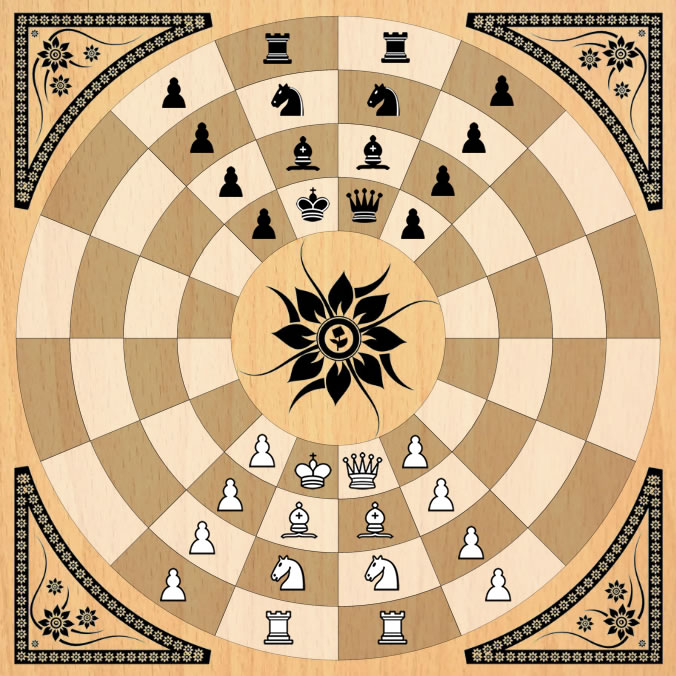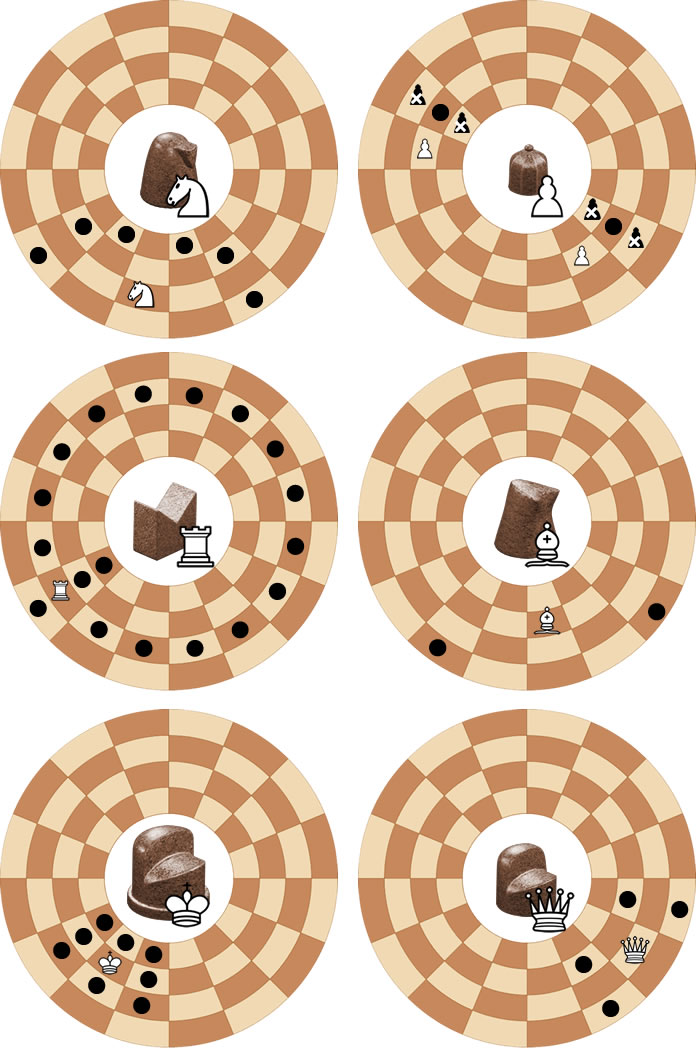Description
Byzantine chess is a circular chess variant based on Shatranj rules.
The design of the pieces was based on a very old chess set dated to the 12th century found in Nishapur, Iran
The original names of pieces were: Shah (King), Firzan (Minister), Fil (Elephant), Faras (Horse for Knight), Rukh (no meaning for rook) and Baidaq (Soldiers for pawns).
Rules
Each player commands a 16 pieces set:
- 1 king
- 1 minister (replacing queen)
- 2 rooks
- 2 elephants (replacing bishops)
- 2 knights
- 8 pawns

Initial setup

Pieces moves
The moves are identical to orthodox chess moves adapted to circular topology.
Dispite this ring topology, rooks are not allowed to move to the position they are leaving.
There is no castling.
Pawns do not have double step start possibility. There is no "En passant" capture and no promotion.
2 pieces have different names and movements:
- The Elephant (Fil) replaces the Bishop: moves and captures 2 steps diagonally (jumping pieces).
- The Minister (Firzan) replaces the Queen: moves and captures 1 step diagonally.
Please see the move diagrams below.

For more details and references, please access the Wikimedia Circular Chess page.